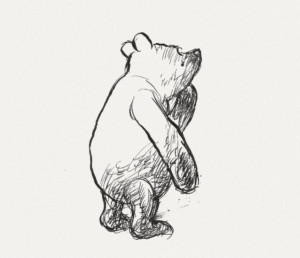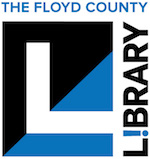Did you know these Pooh facts?
Pooh’s First Appearance: Winnie the Pooh’s first appearance was not in A.A. Milne’s Winnie the Pooh (1926; 161 pages), he actually appeared in a poem collection by Milne two years earlier entitled When We Were Very Young (1924; 100 pages), which featured many poems about Milne’s son Christopher Robin and his stuffed bear (at the time named Edward Bear). A second poem collection, Now We Are Six (1927; 104 pages), was published after Winnie the Pooh.
Pooh’s Name: Edward Bear was renamed Winnie the Pooh after Christopher Robin saw a bear named Winnie at the London Zoo. Winnie was rescued by Captain Harry Couleborn of the Royal Canadian Army Veterinary Corps who purchased her at a train station. She soon became the mascot of Couleborn’s cavalry regiment until the unit went off to fight in World War I, at which point she moved to the London Zoo. Winnie’s story was recently published in two children’s books Winnie: The True Story of the Bear Who Inspired Winnie-the-Pooh (2015; 40 pages) and Finding Winnie: The True Story of the World’s Most Famous Bear (2015; 54 pages); the latter of which won the Caldecott Award in 2016.
…And Tigger Too:  While Winnie the Pooh, Christopher Robin, Piglet, Eeyore, Rabbit, Owl, Kanga and Roo all appeared in Winnie the Pooh, Tigger didn’t appear until the sequel, The House at Pooh Corner (1928; 180 pages).
While Winnie the Pooh, Christopher Robin, Piglet, Eeyore, Rabbit, Owl, Kanga and Roo all appeared in Winnie the Pooh, Tigger didn’t appear until the sequel, The House at Pooh Corner (1928; 180 pages).
Disney: One of Walt Disney’s final projects before his death was “Winnie the Pooh and the Honey Tree” an animated short film adapting the first two chapters of Winnie the Pooh. This short and several others were released as a feature length film called The Many Adventures of Winnie the Pooh in 1977. Various television shows and videos followed as well as a second Pooh film – simply titled Winnie the Pooh – in 2011. It was the last traditionally animated feature film Disney released in theaters.
Pooh Pastiches: There are two officially sanctioned sequels to Winnie the Pooh and The House at Pooh Corner: Return to the Hundred Acre Wood by David Benedictus (2009; 201 pages) and The Best Bear in All the World by Paul Bright, Jeanne Willis, Kate Saunders, and Brian Sibley.
Christopher Robin: Christopher Robin Milne was not fond of the fame brought on him by his father’s books, the subject of his autobiographical Enchanted Places and the film Goodbye, Christopher Robin. A fictional version of Christopher Robin was the protagonist of the recently released live-action Disney film in which Christopher is reunited as an adult with his childhood friends.
Winnie ille Pu: Winnie the Pooh was translated into classical Latin and remains the only Latin-language book to make the New York Times bestseller’s list.
